A Medieval Era Slayer
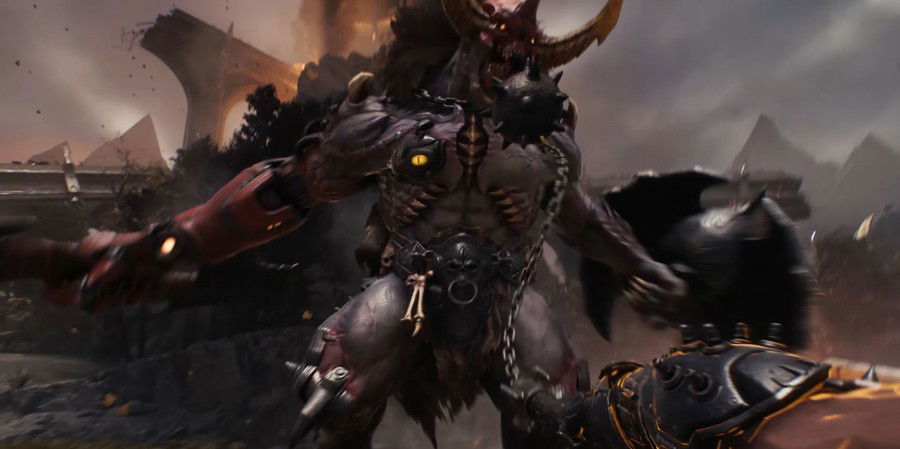
Doom: The Dark Ages arrives as a new chapter in the franchise that defined the FPS genre. Developed by id Software, the game takes Slayer to a dystopian medieval era, combining the classic brutality of the series with innovative mechanics in a gothic setting. The game is a prequel that explores the origins of the protagonist, now enslaved by the Maykrs, balancing narrative and frenetic action. But has this formula worked for the franchise? Let's unravel each aspect of the game in this analysis.
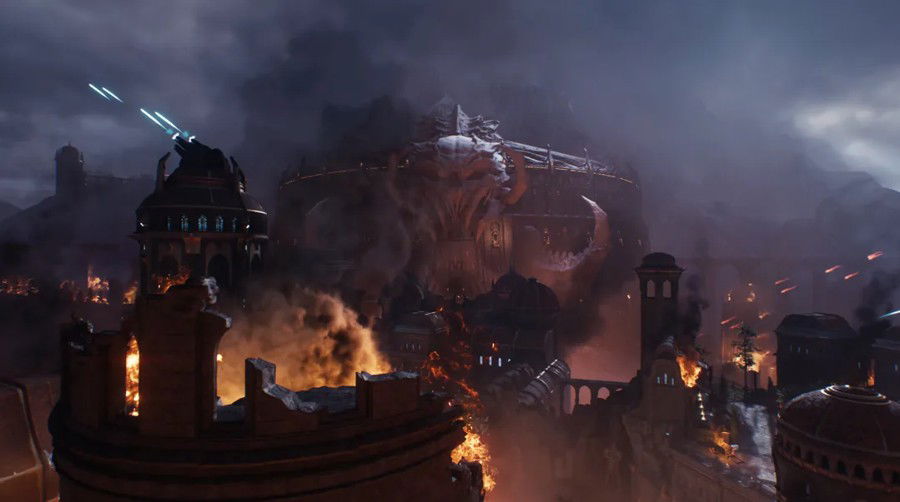
Setting and Narrative: A Primordial War
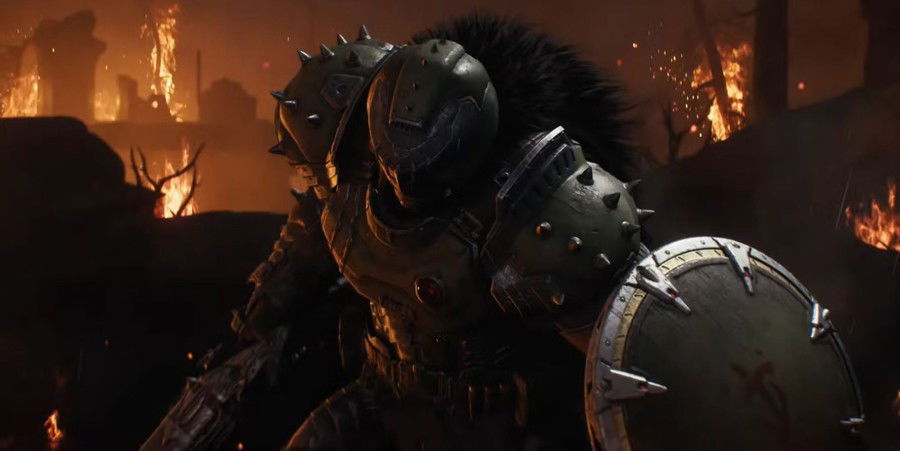
The plot of The Dark Ages takes place before Doom (2016), revealing how Slayer became a legend. This time, he’s just a "tool" of the Maykrs, forced to fight demons in a medieval world corrupted by archaic technology and dark magic. Gothic castles, hellish portals and troubled battlefields replace the futuristic settings, creating a new aesthetic that mixes the primitive with the supernatural.
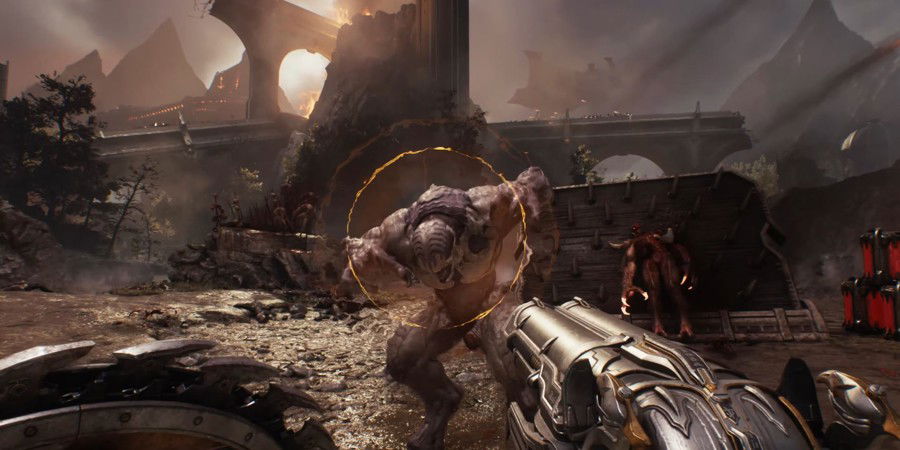
The narrative’s more present than in previous games, but it’s still secondary, not the center of attention. Cinematic cutscenes and scattered documents provide context, but the story is lacking, being poorly explained at times, leaving gaps about the motivations and connections with the medieval mythology established in the game. Despite this, the inclusion of human allies and political intrigue between factions adds something new to the Doom universe, making this the "best story in the series", and even though the bar is not high, this could be the beginning of a new identity for the franchise.
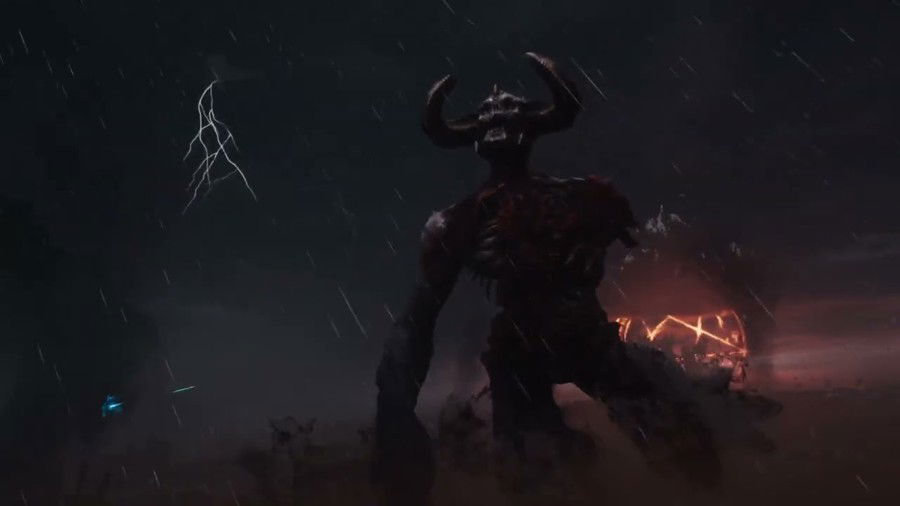
Gameplay: Shield, Parry and the Evolution of Combat
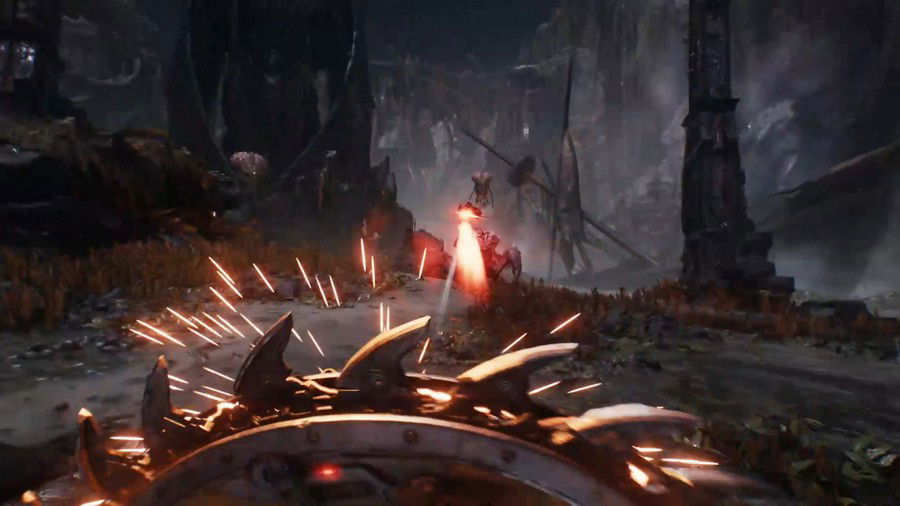
The highlight of The Dark Ages is the shield, a revolutionary addition that completely redefines the game's combat. In addition to blocking attacks, it allows you to deflect projectiles (indicated by green glows) and even be thrown as a cutting disc, decimating groups of enemies (I really loved this in the game). The parry mechanic requires precise timing, rewarding the most skilled players with devastating counterattacks.
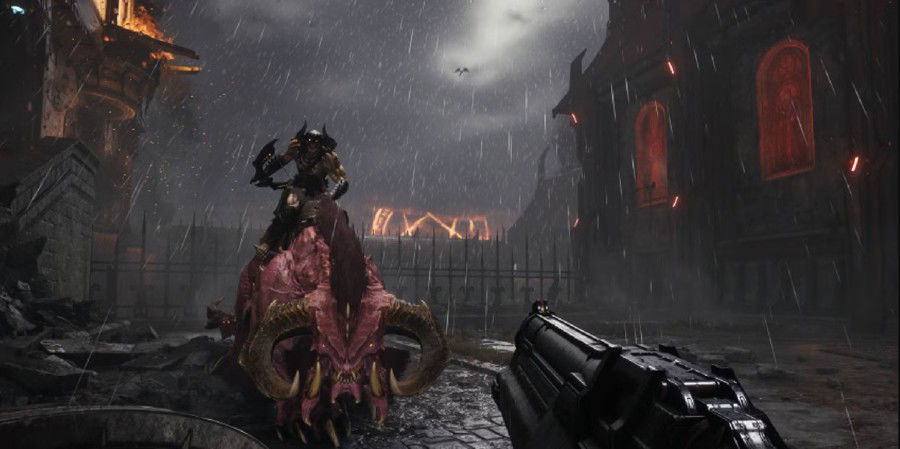
Compared to Doom Eternal, the pace is more tactical and less chaotic and frenetic. Slayer moves like a "tank", with heavy steps and limited jumps, which forces us to have direct confrontations instead of agile dodges. This change in mechanics can divide opinions: while some may find the experience more strategic, others will miss the crazy mobility that exists in Eternal. But if you don't like the movement, you have the option to increase the speed in the game settings and leave it in the frenetic style that we’re used to.
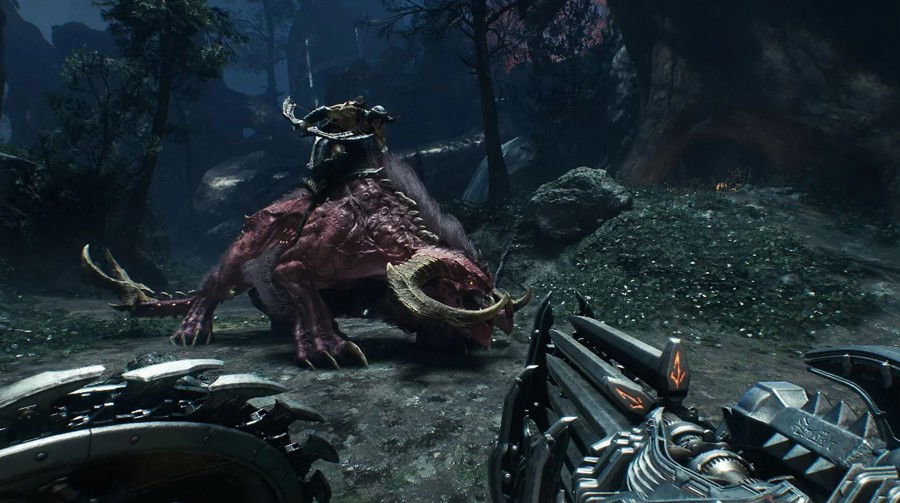
The arsenal maintains the classic variety, with weapons like the super shotgun and the "saw-flail", each now having two interchangeable variations (e.g.: machine gun ↔ grenade launcher). Despite this freedom, many weapons become superfluous, since the shield and one or two favorite weapons will solve most confrontations. Still, the freedom of choice is a highlight.
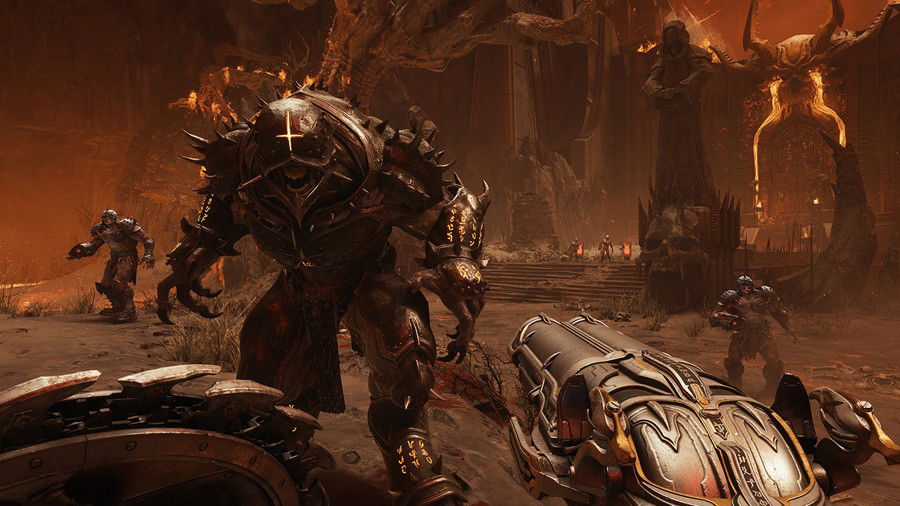
The demonic horde of enemies and bosses includes revisited classics (such as Cacodemons with a Lovecraftian look) and new additions, such as knights riding Pinkies. The number of enemies on screen is extremely impressive, creating scenarios of total war, however, there’s a repetition of patterns, something that more critical players may get tired of. The bosses, on the other hand, are magnificent, requiring intelligent use of shields and weapons, transforming the battles into an incredible war to wage.
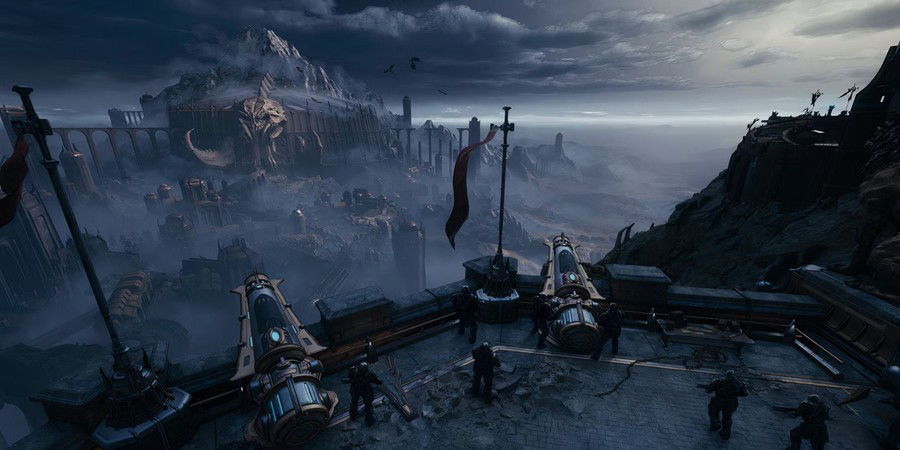
Innovations: Dragons, Mecha and Exploration
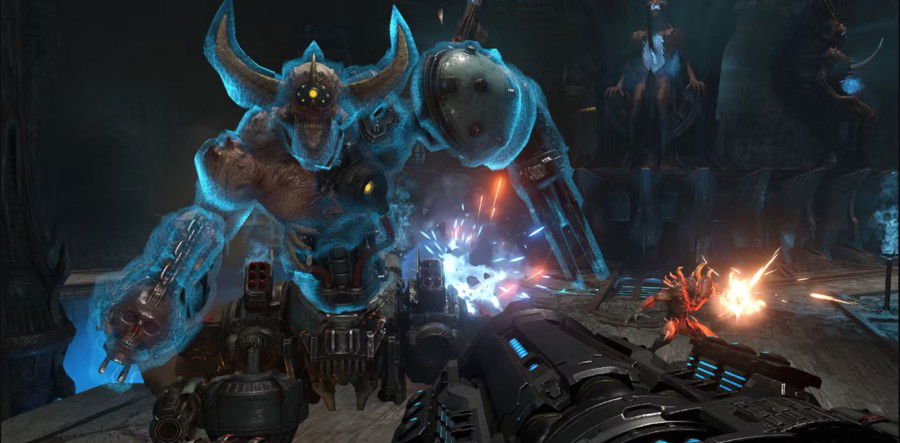
The Dark Ages introduce special parts that make the gameplay shine:
- Winged Dragon: Flying on mythological creatures offers spectacular moments, although the gameplay is simple, focused on dodging and shooting. I really didn't mind, the simple fact of flying on a dragon is already something quite fantastic. And don't be ashamed to say "Dracarys" while riding these winged beasts.
- Mecha Atlan: Controlling a giant robot in Kaiju style battles is something visceral and extremely satisfying. Even if they’re brief moments, the sensation is unique and for fans of giant robots like me, this crazy mix of one moment being on a dragon and the next in a mecha, brings a unique feeling.
Exploration has a special highlight with semi-open maps, full of secrets, puzzles and optional challenges. Finding hidden areas rewards us with health, shield and weapon upgrades, something that captivates us to explore the game map. However, some scenarios have spaces or less than intuitive paths, something that could’ve been used better in the game.
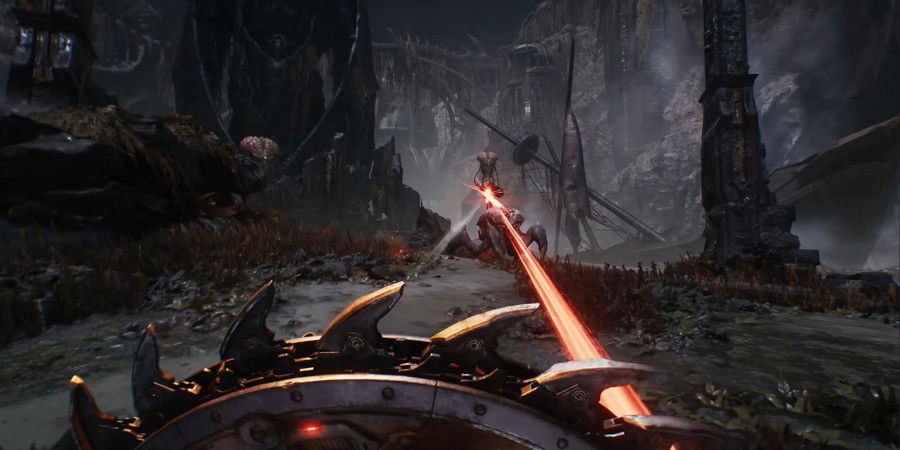
Audiovisual: Gothic, Bloody and (Almost) Perfect
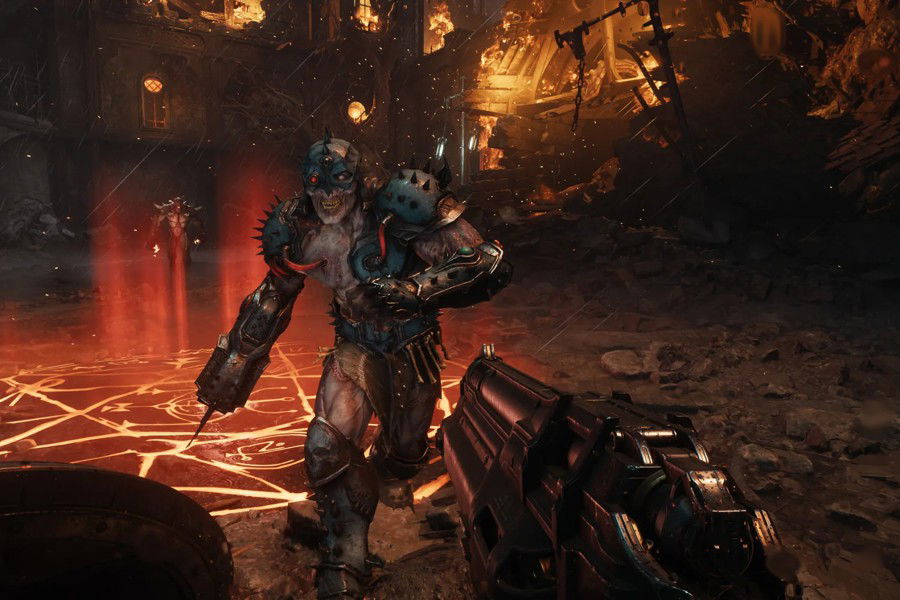
The game is a spectacle when it comes to graphics. The art direction made good use of corroded details, broken stained glass windows and dramatic lighting, creating a gloomy and oppressive atmosphere. Real-time destruction and particle effects heighten the chaos and beauty of the game.
The soundtrack, however, divided opinions. The absence of Mick Gordon is felt: the tracks maintain the aggressive metal, but lack the inventiveness that exists in Eternal. The mixing was also heavily criticized for burying the music during intense combats, but this is something that can easily be fixed with update patches.
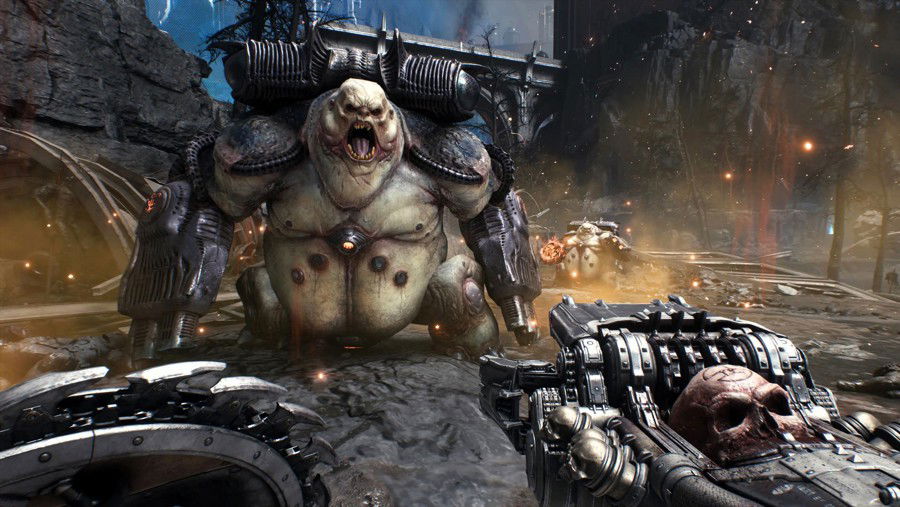
Difficulty and Customization
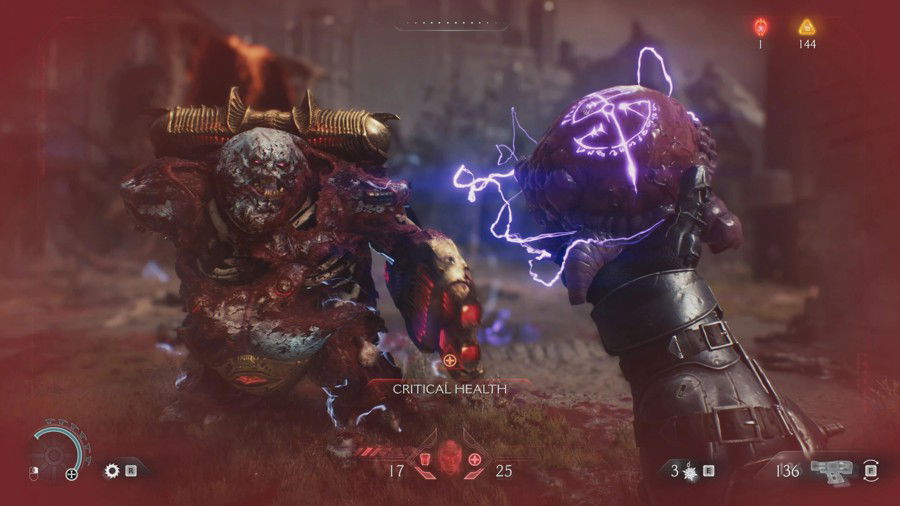
The game offers adjustable difficulty levels, including a brutal "Ultra Nightmare" mode for veterans who love to rage in front of the screen. This mode is no joke, the difficulty borders on insanity. Accessibility options allow you to customize parry windows, damage taken, and even speed, making the game inclusive without sacrificing challenge.
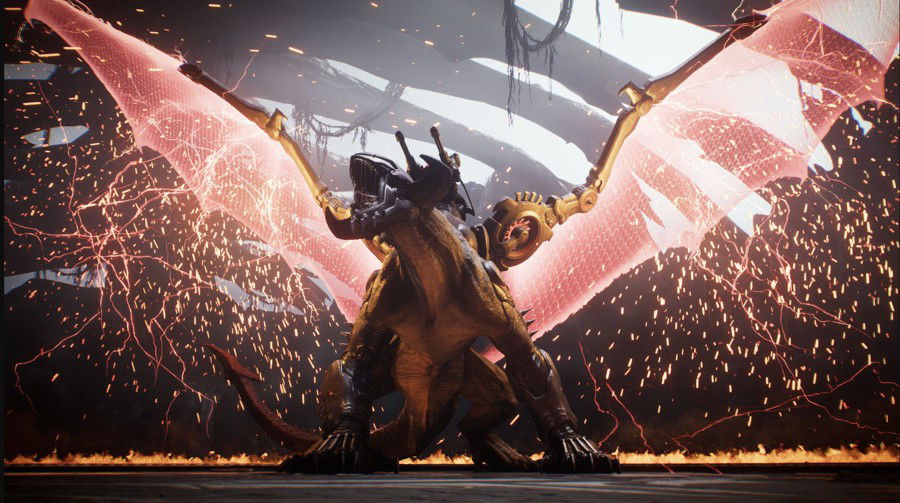
Performance on Platforms
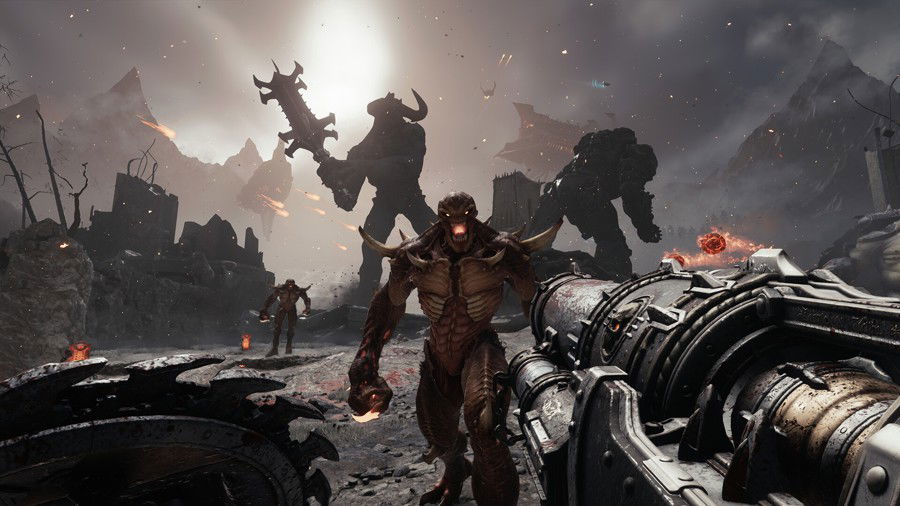
Optimization varies by platform:
- PC: Requires robust hardware to run in 4K/Ultra, with minimum requirements of RTX 2060 SUPER and recommended RTX 3080. The Steam version recorded a peak of 30,812 simultaneous players, below expectations, possibly due to availability on Game Pass 110. Technologies such as DLSS 4.0 and Ray Tracing increase immersion, ensuring fluidity in powerful setups.
- Xbox Series X/S: Offers stable 60 fps, HDR10 and Ray Tracing, with fast loading and compatibility with Cloud Gaming. The experience is comparable to that of PC, especially in dynamic 1440p resolution.
- PlayStation 5: Optimized for PS5 Pro, uses DualSense features such as adaptive vibration and resistive triggers. The version maintains 4K/60fps.

Pros and Cons
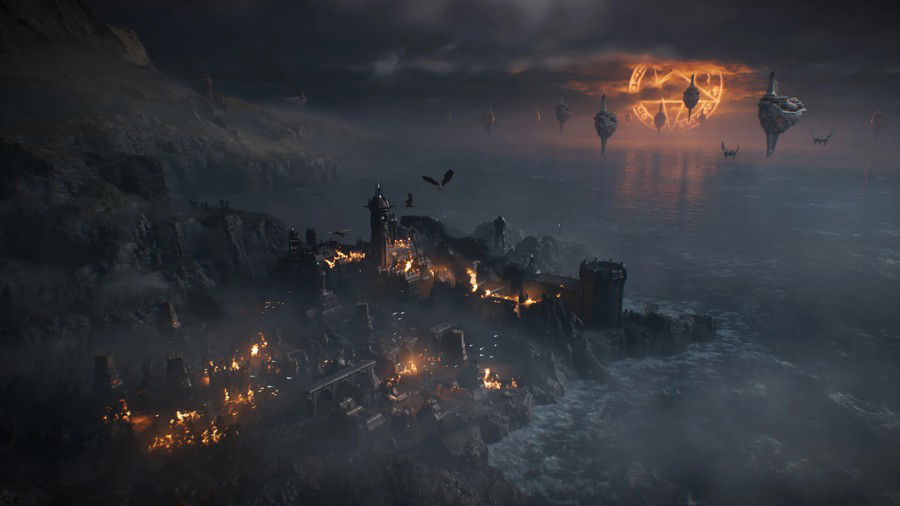
Pros
- Strategic and Innovative Combat: The saw-shield revolutionizes gameplay, allowing blocking, counterattacks and even lethal throws. Its integration with the parry system requires precise timing, which adds more tactics to battles.
- Mecha Atlan and Serrat Dragon: Missions with the giant robot and the dragon, although brief, offer variety and moments of extreme satisfaction when controlling them. The first destroys structures with brutal blows, while the second allows flight and dodges in aerial battles.
- Versatile Arsenal: Weapons such as the Super Shotgun and the Spiked Flail encourage creative combinations. With two variations, each can be adapted to different enemies.
- Exploration and Level Design: Semi-open maps hide secrets, upgrades and optional challenges, encouraging the exploration of scenarios such as ruined castles and dark forests.
- Technology and Art Direction: The idTech 8 engine ensures real-time destruction and detailed particles. The techno-medieval aesthetic creates a unique look.
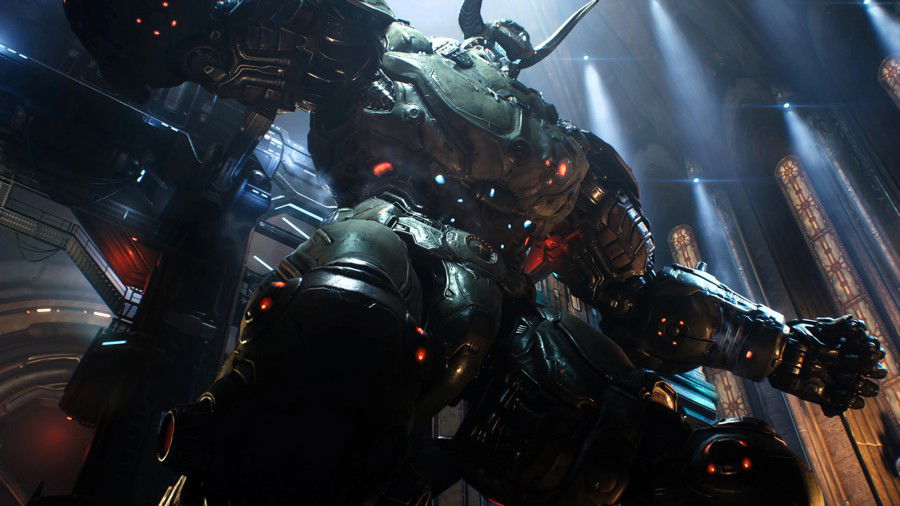
Cons
- Superficial Narrative: Despite exploring the origins of Slayer, the plot is marked by linear characters and unmemorable dialogues. Excessive cutscenes interrupt the rhythm, without deepening the story, motivations or connections with the game's mythology.
- Repetitiveness of Enemies and Objectives: The second half of the campaign repeats combat patterns and enemies, with almost nothing new after the introduction of all demon classes.
- Underutilized Vehicle Sections: Missions with the Mecha Atlan and the Serrat Dragon, although visually striking, are short and lack variety, something that could be explored more.
- Soundtrack: The aggressive metal tracks are competent, but lack the originality of Doom Eternal. The mixing also leaves the music very low at key moments.
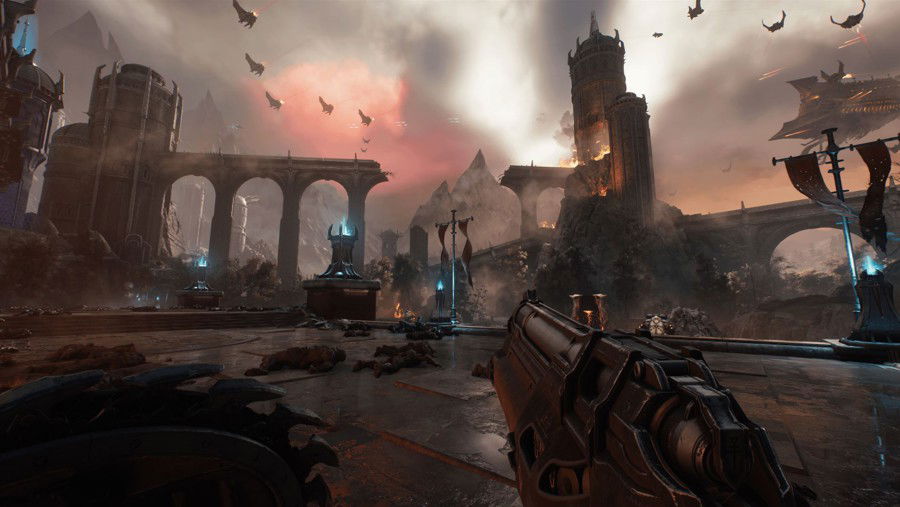
Conclusion: A New Era for Slayer
Doom: The Dark Ages is an ambitious and welcome evolution. The shield redefines combat, the medieval setting is fascinating, and the epic scale of the battles is impressive. Despite the confusing narrative and the repetition of enemies, the game maintains the essence of the franchise, creative violence and pure adrenaline. Doom: The Dark Ages proves that even legends can be reborn, more brutal than ever.
Recommended for: Fans of tactical FPS, lovers of gothic aesthetics and those looking for a challenging experience.
Avoid if you prefer the mobility of Eternal or deeper stories.
Doom: The Dark Ages is available for PC, Xbox Series X/S and PlayStation 5, in addition to being available on Xbox Game Pass since its release.









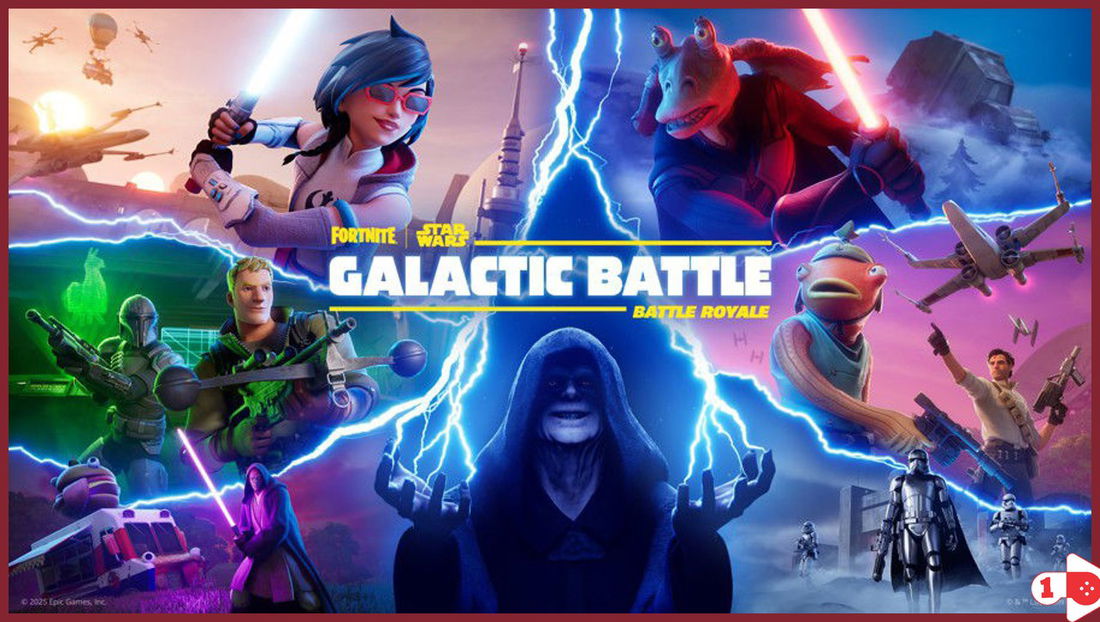
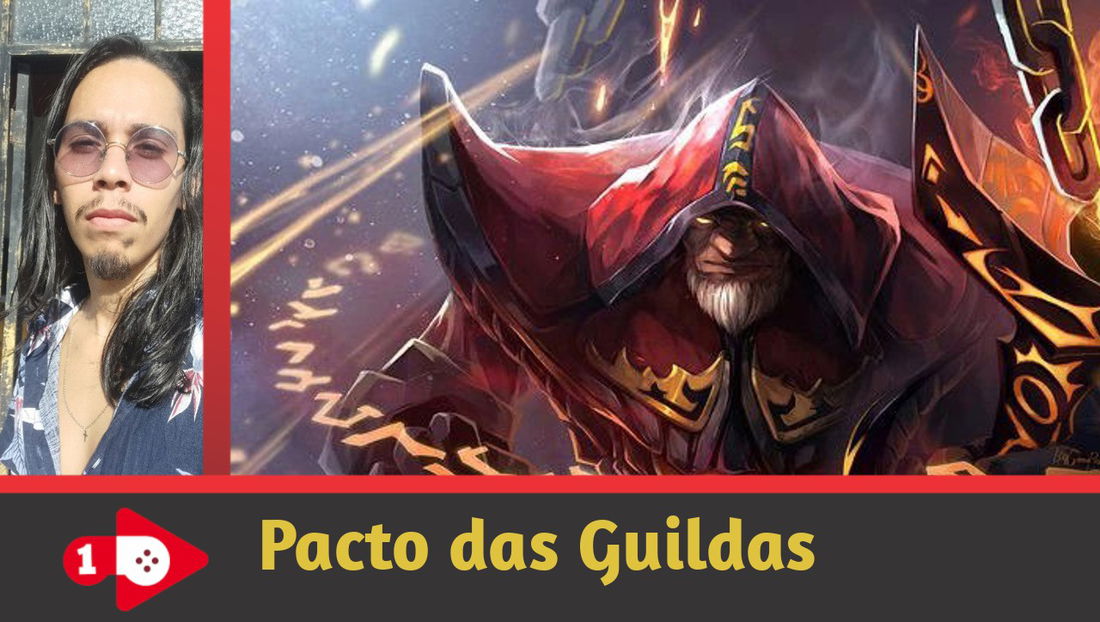



— Comments 0
, Reactions 1
Be the first to comment